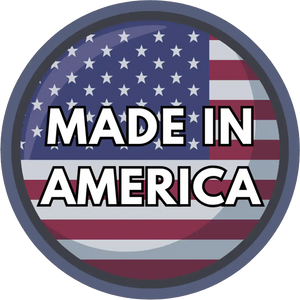Creating a calm, organized, and child-centered environment is at the heart of the Montessori philosophy.
One of the simplest yet most impactful ways to achieve this at home is by choosing the right Montessori toy shelf.
The right shelf not only keeps your child’s play area tidy but also promotes independence, focus, and respect for their surroundings.
But with so many options available—varying in size, design, storage type, and materials—how do you choose the perfect one?
In this guide, we’ll walk through what really matters when selecting a Montessori toy shelf and how the right choice can transform your child’s learning and play experience
Understanding Montessori Toy Storage
Montessori toy shelves are more than just storage units.
They are fundamental tools that help create an environment where children can explore and learn at their own pace.
The right shelf encourages a child’s natural curiosity and supports their development by making toys easily accessible and organized.
Key Principles of Montessori Shelves
- Accessibility: Shelves should be low enough for children to reach all their toys independently.
- Order: An organized space helps children learn to categorize and sort, developing their cognitive skills.
- Aesthetics: A simple, beautiful shelf invites children to explore and can enhance the overall look of a playroom.
Comparing Storage Sizes
When selecting a Montessori toy shelf, the size of the storage space is crucial. You want a shelf that is neither too large nor too small for your space and toy collection.
Small Spaces
If you have limited space, consider a compact shelf that can still hold a variety of toys. Look for shelves with multiple tiers to maximize vertical space without overwhelming a small room.
Medium Spaces
For a medium-sized playroom, a shelf with moderate storage space is ideal. This allows for a good selection of toys without overcrowding, which can be overwhelming for children.
Large Spaces
In a larger room, a more extensive shelf can be used. However, it’s important to avoid filling the shelf with too many toys. Instead, rotate toys regularly to keep the selection fresh and engaging.
 Exploring Materials
Exploring Materials
The material of the toy shelf is just as important as its size. The right material not only affects the durability and safety of the shelf but also its aesthetic appeal.
Wood
Wood is a popular choice for Montessori toy shelves due to its natural look and durability. It is sturdy and can withstand the wear and tear of daily use by children. Additionally, wood has a warm, inviting feel that complements most playroom designs.
Types of Wood:
- Solid Wood: Offers great durability and a classic look. It's an excellent choice for those looking for a long-lasting shelf.
- Plywood: A more affordable option that still provides strength and a smooth finish.
Metal
While less common, metal shelves can offer a modern look. However, they may not align as well with the Montessori philosophy of natural materials and can be heavier and harder to move.
Plastic
Plastic shelves are lightweight and often come in a variety of colors. They are easy to clean but may not offer the same durability and aesthetic as wood.
Safety Considerations
Safety should be a top priority when choosing a Montessori toy shelf. Here are some tips to ensure your shelf is safe for your child:
- Stability: Ensure the shelf is stable and won't tip over easily. Secure it to the wall if necessary.
- Non-Toxic Finishes: Choose shelves finished with non-toxic paint or varnish to ensure they are safe for children.
- Smooth Edges: Look for shelves with rounded edges to prevent injuries.
Creating a Montessori-Friendly Environment
Once you've selected the perfect shelf, it's time to set up a Montessori-friendly environment. Here are some tips to get started:
Rotating Toys
Keep the play area fresh and exciting by rotating toys regularly. This keeps children engaged and helps them focus on fewer toys at a time, which can enhance their learning experience.
Categorizing Toys
Organize toys by category and place similar items together. This helps children learn to sort and categorize, building their cognitive skills.
Encouraging Independence
Arrange the shelf so that all toys are within easy reach for your child. This encourages them to make choices independently and develop decision-making skills.
5. Practical Tips for Choosing the Right Shelf
Here are a few final tips to guide your decision:
-
Measure your space before purchasing—ensure enough clearance for play and movement.
-
Prioritize low, open designs for younger children to build independence.
-
Invest in quality materials that will last through multiple growth stages.
-
Rotate toys regularly to maintain engagement and reduce clutter.
-
Consider longevity—choose a shelf that can later store books, art supplies, or learning materials.
FAQs
What makes a toy shelf “Montessori”?
A Montessori toy shelf is designed at a child’s height, with open and accessible storage that encourages independence, order, and self-directed learning.
How many toys should I display at once?
Typically, 6–10 toys is ideal. Rotating toys weekly keeps your child engaged without overwhelming them.
What’s the best wood for a Montessori shelf?
Solid hardwoods like birch, maple, or oak are preferred for durability and natural beauty. Dannico Woodworks uses only premium hardwoods sourced responsibly.
Can a Montessori toy shelf be used as a bookshelf?
Absolutely! Many Montessori shelves are versatile and can store books, puzzles, or educational materials as your child grows.
Conclusion
Choosing the perfect Montessori toy shelf is more than a design decision—it’s an investment in your child’s independence, creativity, and growth.
By paying attention to storage type, size, and materials, you can create a learning environment that truly supports your little one’s journey toward self-discovery.
At Dannico Woodworks, we believe every piece of furniture should empower children to explore, learn, and thrive in spaces made just for them.
So, as you design your child’s playroom—ask yourself: What kind of environment will help your child grow into their most independent, confident self?


